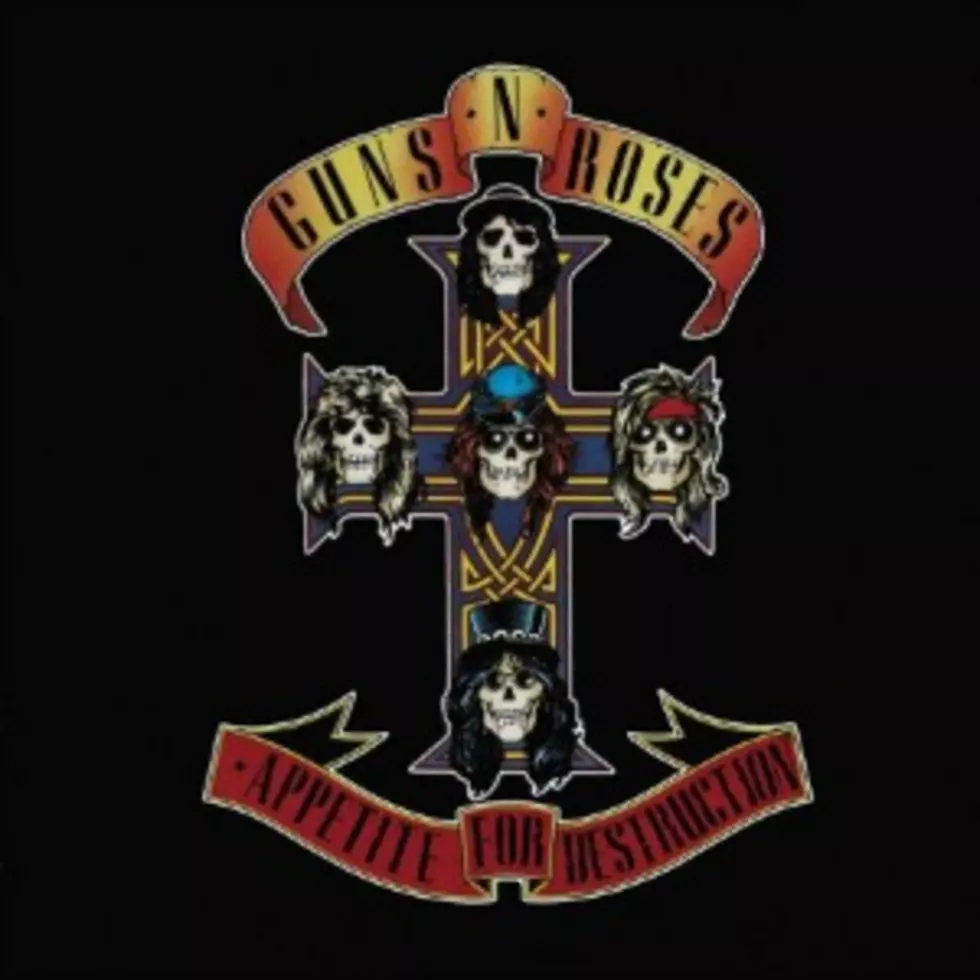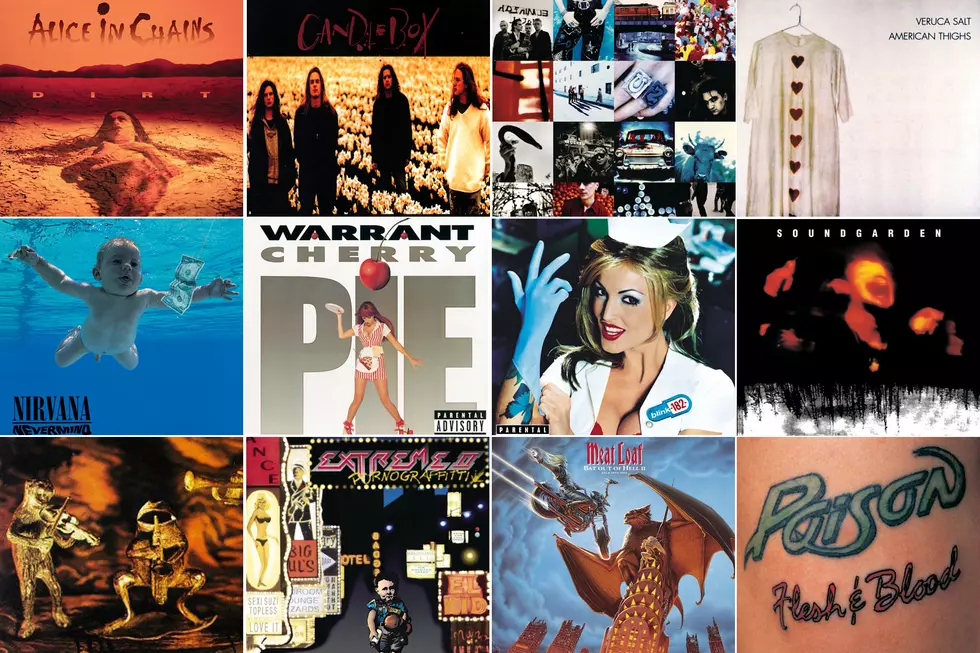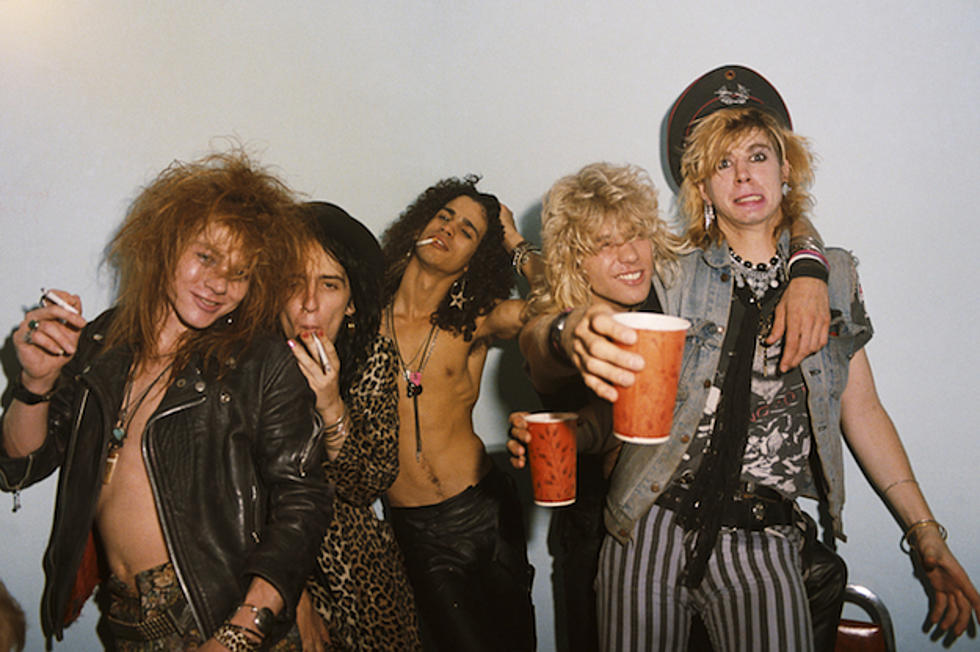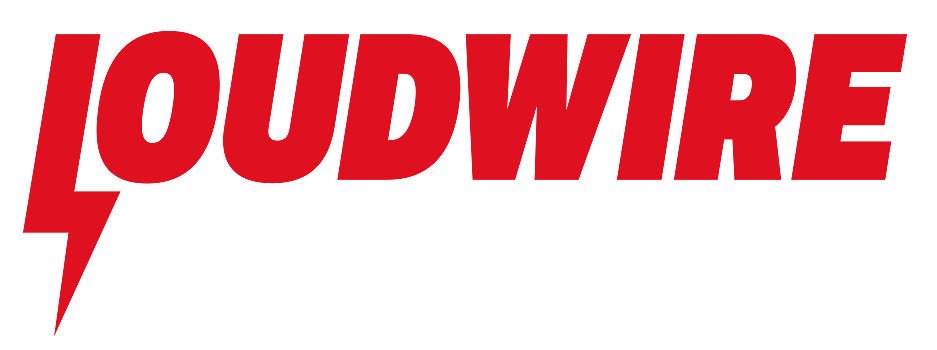
Cover Stories: Guns N’ Roses, ‘Appetite for Destruction’
Rarely has a debut album been so aptly titled. From the moment Guns N' Roses burst onto Hollywood's Sunset Strip in the mid-'80s, they appeared hellbent for destruction. Comparisons to Aerosmith's "Toxic Twins" and other elder statesmen of self-annihilation were frequent and, truth be told, a bit romanticized. "Finally!" people seemed to say. "Danger is back on the Strip."
Appetite for Destruction's cover art captured that dangerous vibe perfectly: A cross emblazoned with the skulls of the five band members. Top and bottom rockers frame the cross like a motorcycle club patch. The message was clear: The Gunners weren't a band so much as an invading Mongol horde, and either the band or the fans weren't coming home in one piece after the show.
It's the perfect marriage of title and artwork. There's only one problem with this narrative: This isn't Appetite's original album cover.
The story behind the album's original sleeve begins 20 years before Appetite's birth, in the studios of Ed "Big Daddy" Roth. Roth was an L.A. area hot rodder best known as the father of the "Rat Fink," a giant, googly-eyed, tongue wagging cartoon rat depicted behind the wheel of fire belching hot rods and motorcycles. By the mid-'60s, Roth had a Rat Fink merchandising empire that would make Gene Simmons envious. Kids scooped up T-shirts and model kits, and those who couldn't afford the real deal doodled Rat Finks on their notebooks.
Meanwhile, a talented young artist named Robert Williams was having a hard time finding a gig that suited him. The painter was a poor match for the period. During a time when "real art" meant abstract splashes of color, Williams' paintings were detailed and realistic. Unable to get the art world's attention, he headed to the unemployment office in hopes of finding illustration gigs.
Malicious Resplendence: The Paintings of Robt. Williams picks up the story:
After a series of further fruitless attempts at matching Williams' skills with prospective employers, the manager of the unemployment office came up with a last chance desperation match. There was this one job that everyone who had been to said was awful. "They told me that the 'freak' that ran it was some guy called Big Daddy and I said, 'Wait a minute, would that be Ed Roth? They said it was, and I said, 'Let me at it. I was born for this job."
He was, too. As Roth's art director, Williams did everything from T-shirt designs to assisting with car customizations. When Roth closed his studio in 1970, Williams moved over to Zap Comix, where he worked alongside artists Robert Crumb and Rick Griffin, both of whom have contributed essential album covers of their own.
By the mid-'70s Williams was a complete anomaly -- an artist who could lay down paint like a Dutch master, but whose biggest success was underground comics and hot rod T-shirts. Rather than fight it, the painter rolled with it. Again, from Malicious Resplendence:
The painter further realized that exaggerated forms like cartoons were the truest, purest examples of abstraction. Robert Williams arrived at the notion that cartooning in its undiluted form is a true expression of an accessible art form for the public of the 20th century....He executed a series of what he termed "Super Cartoons," which were blatantly cartoonish tableaux painted in a fine meticulous style.
One such cartoon is dated 1978, though reference books on the artist date the painting to 1979. A young street vendor selling wind-up toy robots named "Mr. Mini-Mite" lies unconscious on the sidewalk, her dress torn open and her underwear around her calves. Another robot, who is dressed like Williams' old Zap Comix colleague Robert Crumb but with a bear trap for a mouth, stomps the Mini-Mites and crushes them in the steel clamps that he calls hands. From behind a wooden fence leaps some kind of armored, red beast with daggers for teeth and a Rat Fink-like tongue lolling about. He sports a German helmet not unlike those associated with outlaw bikers. What appear to be sperm with skulls for heads emanate from the monster.
The painting's title: "Appetite for Destruction."
The Lowbrow Art of Robt. Williams, which features "Appetite" on its cover, quotes Williams as saying that the Super Cartoons "were intended to have no more meaning than a picture on a cocktail napkin, and if they appear to some people to be no more than tightly rendered cartoons, well, those people are right." However, the book goes on to single out "Appetite" in particular as possibly "more appealing to those concerned with moral issues," noting that the scene captures the split second prior to the red monster "carrying out justice" on the assailling robot.
How the image came to adorn Guns N' Roses' debut album is another story altogether. Back in 2011, Axl Rose told the guys at That Metal Show that his original cover design was much different. Loudwire reported at the time that Axl -
also revealed that he originally wanted the cover of Appetite for Destruction to be a photo of the tragic Challenger shuttle explosion, which was also on the cover of Time. He said he wanted to use it due to the striking nature of the image but the band was persuaded not to use it; the original cover they did use was also controversial, including the inside comic-like image of a woman being assaulted.
Danny Sugerman's 1991's biography of the band, Appetite for Destruction, offers a different account. According to the author the band were floundering for a title, when Axl happened to see a postcard image of Williams' painting and noticed "in the back, in small capital letters read the following words: APPETITE FOR DESTRUCTION.
Sugerman states that Warner Brothers, Geffen's distributor, balked at using the painting for the album's cover, so --
Axl felt compelled to point out that the picture in and of itself wasn't indecent, it's what people chose to see. To him it represented the robot as society, the girl as a metaphor for either the band, or individual humanity as a whole ... in other words, he picked artwork that represented ... the progress of Western culture has outstripped man's spiritual and emotional ability to deal with it.
The band won, and the Williams cover hit the stores only to be greeted immediately by backlash. Both American and British chains refused to stock the album, so another edition was printed with the now iconic "cross" cover (also called the "black sleeve") and Williams' painting was moved to the inner sleeve.
This is the kind of cover story that may have destroyed another band, but not the Gunners. Appetite for Destruction has sold close to 20 million copies, and as for Robert Williams? The artist has finally (though begrudgingly) been accepted by the fine art establishment that shunned him for decades.
12 Unforgettable Axl Rose Onstage Moments
See How Old Axl Rose + Other Rock Stars Are in This Birthday Gallery
More From Loudwire









